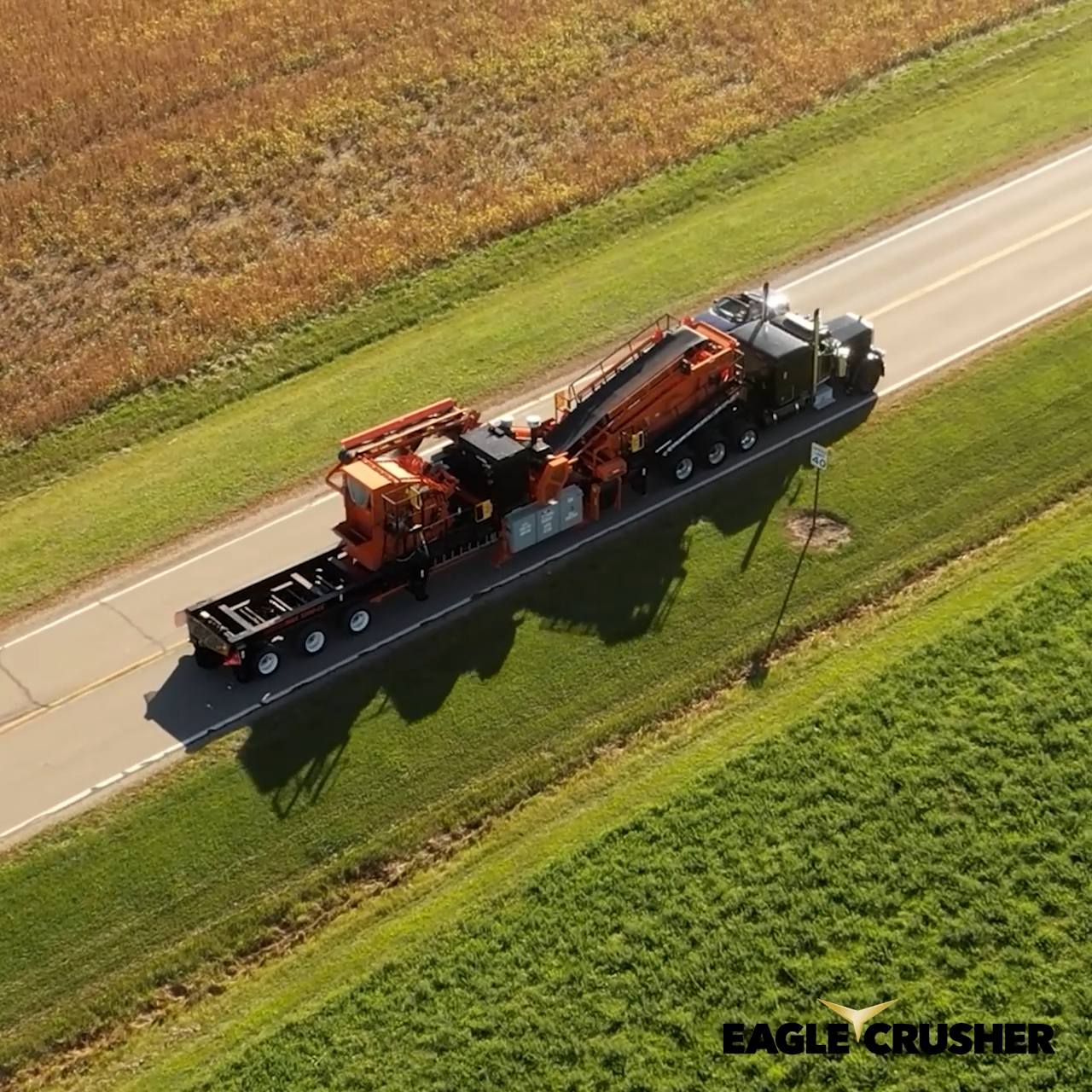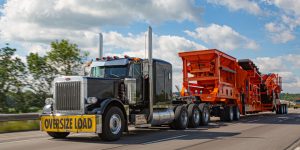A Plant’s Journey

A Plant’s Journey: The Effort Behind Getting Equipment from Eagle Crusher to Your Site
When you see a piece of heavy equipment rolling onto a job site, it’s easy to take for granted the immense effort that goes into getting it there. Whether it’s an excavator, a screening plant, or a rock crusher, the process of transporting equipment from the manufacturer to the field is a complex and highly coordinated operation. Here’s a behind-the-scenes look at what it takes to bring essential equipment to your job site.
Logistics Planning
Once the equipment has been engineered and built, the task then falls onto the logistics team to coordinate getting the equipment from point a to point b.
Shipping heavy equipment requires meticulous planning. Logistics teams coordinate with transport companies and end users to determine the best route and method of delivery. Eagle Crusher’s Sales Support Manager and Logistics Coordinator, Lisa, always starts with the customer. Factors such as size, weight, and regulations must be considered when choosing between road, rail, air, or sea transport. Additionally, it’s important to establish if the customer has an installation plan, when they are available to accept the delivery, and confirm their “ship to” location.
It may seem easy to ship items from point a to point b, but for oversized or overweight loads, like rock crushing equipment, obtaining special permits and planning for route restrictions is crucial. Narrow roads, low bridges, and weight limits can present challenges that require careful navigation and scheduling.

Eagle Crusher’s Sales Support Manager, Lisa
Transportation Challenges
Transporting heavy equipment isn’t as simple as moving standard freight. Escort vehicles, pilot cars, and law enforcement coordination are often necessary for oversized loads. Weather conditions, traffic, and road closures can cause unexpected delays, requiring real-time adjustments to logistics plans.
For oversized equipment deliveries, it’s imperative that the drivers in charge of transportation are highly experienced. Lisa notes that coordinators don’t always know if the equipment can be delivered to the job site so it’s important to have the driver and on-site contact person communicating from the start. It allows the coordinator and driver to know how the equipment needs to be delivered and adjust if needed.

Rail and sea transport introduce additional challenges, such as securing equipment against shifting loads or saltwater exposure. If air freight is needed for urgent deliveries, specialized cargo planes and loading procedures must be arranged.
Site Preparation and Final Delivery
Before equipment arrives at the job site, the receiving area must be prepared. This includes clearing space, reinforcing ground surfaces, and ensuring that lifting equipment is available for unloading. Coordination with site managers, crane operators, and transportation teams is crucial to ensure a smooth handoff.
Once the equipment is delivered, it undergoes a final inspection to check for damage incurred during transit. Operators may also perform test runs and calibrations before the machinery is put to work.
The Unsung Heroes Behind Equipment Delivery
The process of moving heavy equipment is a team effort involving manufacturers, logistics experts, truck drivers, crane operators, and site managers. Without the expertise of shipping logistics managers, like Eagle Crusher’s Sales Support Manager Lisa, and coordination, job sites would face significant delays and inefficiencies.
So, the next time you see a rock crusher arriving at a construction site, remember the intricate journey it took to get there. Behind every piece of machinery is a carefully executed plan ensuring that the right equipment arrives on time, ready to crush it.



